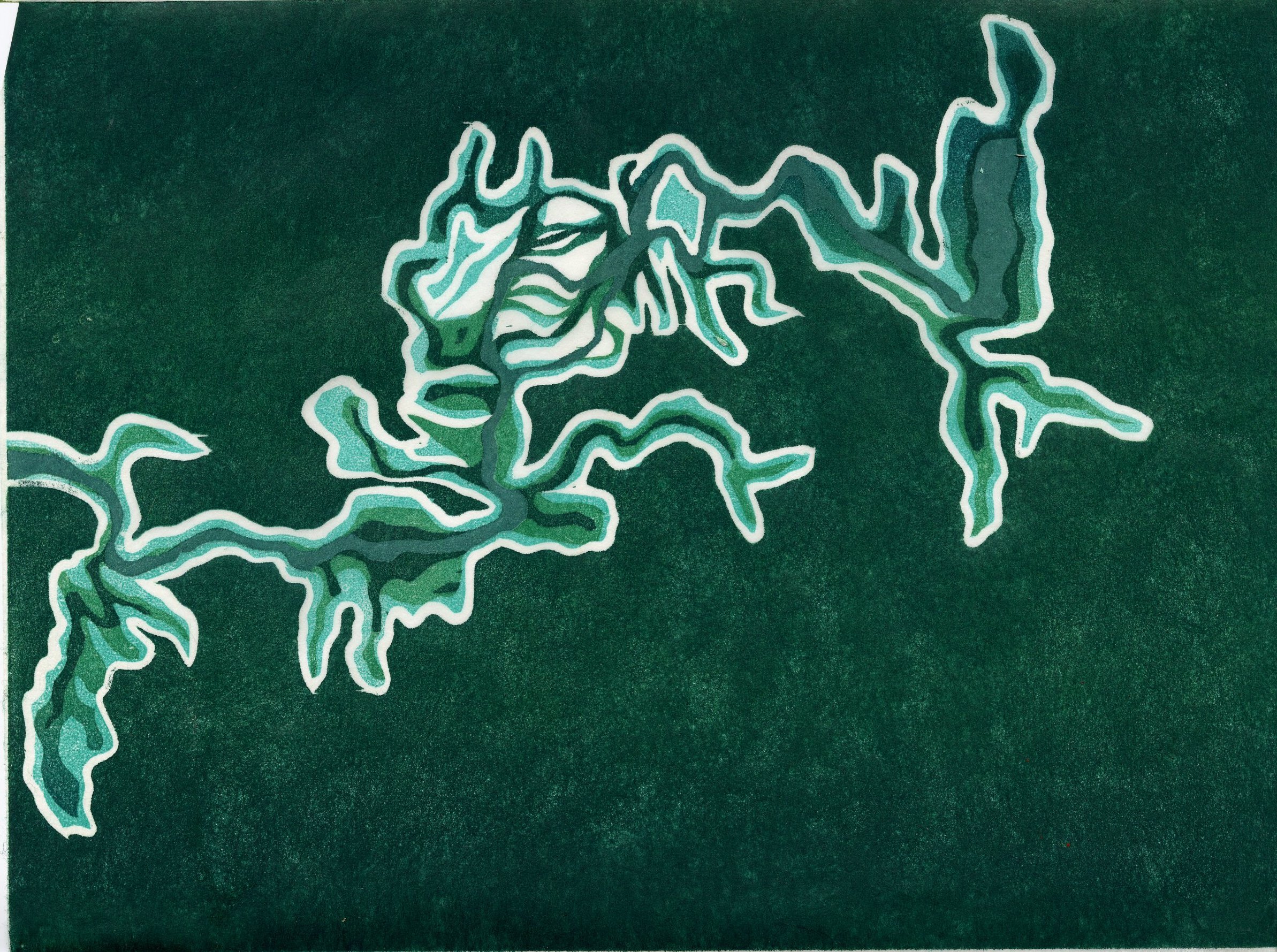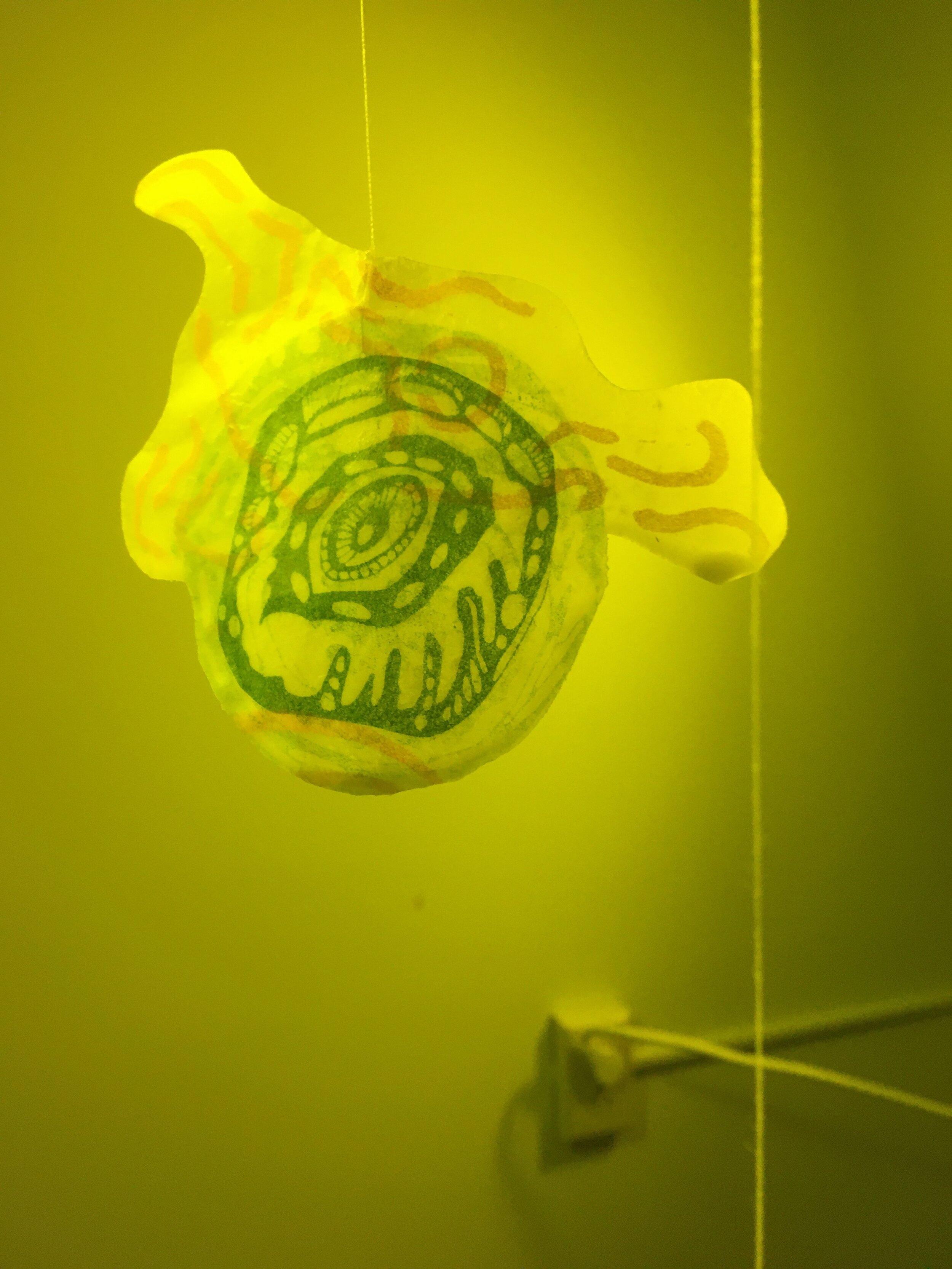
Visualizing the Range of Glaciers
This page served as a landing spot for sharing bits of my undergraduate environmental science honors thesis and related printmaking work. The North Cascades in Washington, the place I know as home, hold many glaciers that have complex ties to both ecological and human communities. Climate change is rewriting the state of these glaciers and the relationships that they can sustain. Although these connections are usually described by science, art is an expansive form of communicating a shifting landscape and its inhabitants. My project strove to explore a remarkable place in flux with various ways of knowing - scientific, personal, artistic, anecdotal. Enjoy these snippets, or download my entire thesis “Visualizing the Range of Glaciers: Science, Art and Narrative if you care to.
Wolverines
Gulo-gulo on the move
The concept:
Only 30-40 wolverines (Gulo gulo) populate the North Cascades. These are incredible animals (Mustelidae) that can travel great distances through the mountains. They are a snow-obligate species, meaning that they rely on snowpack for a portion of their lifecycle. For wolverines, it is their denning season, from February through May, that is their most vulnerable time. Diminishing spring snowpack due to climate change and human disturbance from vehicles or backcountry recreation threaten the wolverines at this time of year. This print shows one family of wolverines reacting to human disturbance and melt, and setting out to find new habitat.
Learn more from the Cascades Wolverine Project.
The print:
I began with a reduction cut - building layered, snowy habitat for the wolverine to tromp through. Then I sketched in the transient family of wolverines - first sleeping soundly, then becoming wary of human presence, and finally moving the den. I sliced apart these prints and surrounded them with other characters impacting the narrative - the trees and rock that generate habitat and the room for a den, the human footprint, chaotic assemblages of environment-people. I also incorporated woodcuts of the wolverine family. After pasting the major pieces together, I wove fragments of texture and color throughout the scene for something to keep it cohesive and lead the eye.
Mountain Evidence
This material isn’t yet sure if it wants to be a collage or a book. Layers of evidence accumulate: climate change is affecting the North Cascades. Glaciers shrink into repose, moraines emerge. The textures of Skagit gneiss and ancient ice glint in the sun. Four people traverse the range, dwarved by peaks and valleys. They find whitebark pine standing barren, no cones, no needles. Wolverine haunts the scene, quiet and rare. Scientists compile topographic maps, charting isoglacihypses and terminus retreat.
This haphazard hammer - magnet - plywood - paper configuration is a mounting wall of evidence. Mapping out the material is part of my process of understanding and connecting. Next I may add text or more swatches of color and texture. Or I will bind these prints into an interactive book. Let me know your thoughts or questions!
I highly encourage you to check out Anna McKee’s Evidence Wall for another approach on this theme!
Tangle
Description: This tangle of encaustic prints collaged on sekishu, washi and cardstock fills three dimensional space. The berries of the North Cascades are the heart of a vibrant ecological network. Ripe salmonberries and huckleberries interact with other plant forms and topography. Overlapping imagery and the aerial, shifting relationship of the pieces highlight the many relations across ecological scales.
One of my favorite blobs: many layers, colors, textures, and a coat of wax.
Process: I began printing from a stack of freshly carved blocks- some hand carved, others laser cut. Bright colors, thin paper, and many layers accumulated. I pasted some bits together with wheat paste, experimenting with new combinations of the imagery. As I moved towards presenting the prints, I thought three-dimensionally. First I tried mounting the prints off of the wall using magnets and nails of various lengths. Then one night in the studio, I stumbled into a pan full of wax, turned the heat on under it, and began dipping the prints in wax. This made them a little heavier and changed their luminosity. I added string and then constructed the mobile in a few orientations.
Work in progress, aka configuring a configuration. I’m still working on the final arrangement and getting some good documentation of this piece. I’ll take a video, as it’s really neat to move around and through the objects and get them to spin, meeting the patterns on both sides and getting a feel for the interplay between the pieces. This is the first time I’ve really put my prints into the air and I am excited to keep experimenting with suspended wood, acrylic and paper.
60 second video moving through an early casual installation of the piece






















